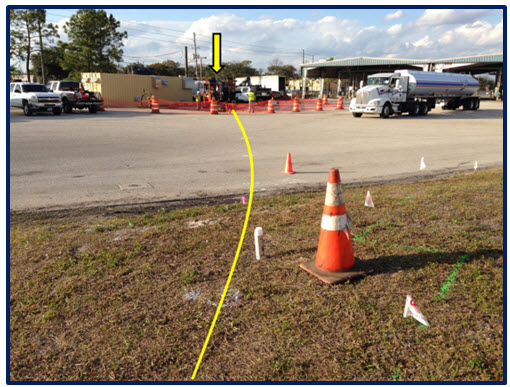How do you install a remediation system at a facility that never shuts down?
By using a directional drill for the installation of 21 horizontal biosparge wells. That’s just what one consulting firm did at a bulk fuel terminal in Florida. The project managers enlisted the services of Directional Technologies to install 21 horizontal wells totaling over 13,000 feet. Horizontal air sparge wells were installed beneath the terminal’s refueling racks, parking lot, and office building. With multiple wells being installed offsite under roadways and gas stations including the underground fuel tanks.
All 13,000+ feet of horizontal wells were completed without shutting down the busy road, disrupting operations at the terminal, and disrupting other businesses.
The air sparge wells, had individual lengths between 400 feet and 860 feet, were part of a remediation system. The system was designed to remediate petroleum contamination in the soil and groundwater beneath the facility. Each well was constructed of a 3 inch diameter HDPE pipe with a riser section and screen sections of varying length. The well screens were placed at a depth of approximately 35 feet below ground surface. DTI completed the project using a “blind” installation technique that allows the wellbore to terminate in the subsurface at the end of the horizontal screen.
The 21 wells were installed from three different common starting points for subsequent plumbing into the remediation system. The system is effectively reducing soil and groundwater contaminants without disruption to the active terminal and surrounding operations.
